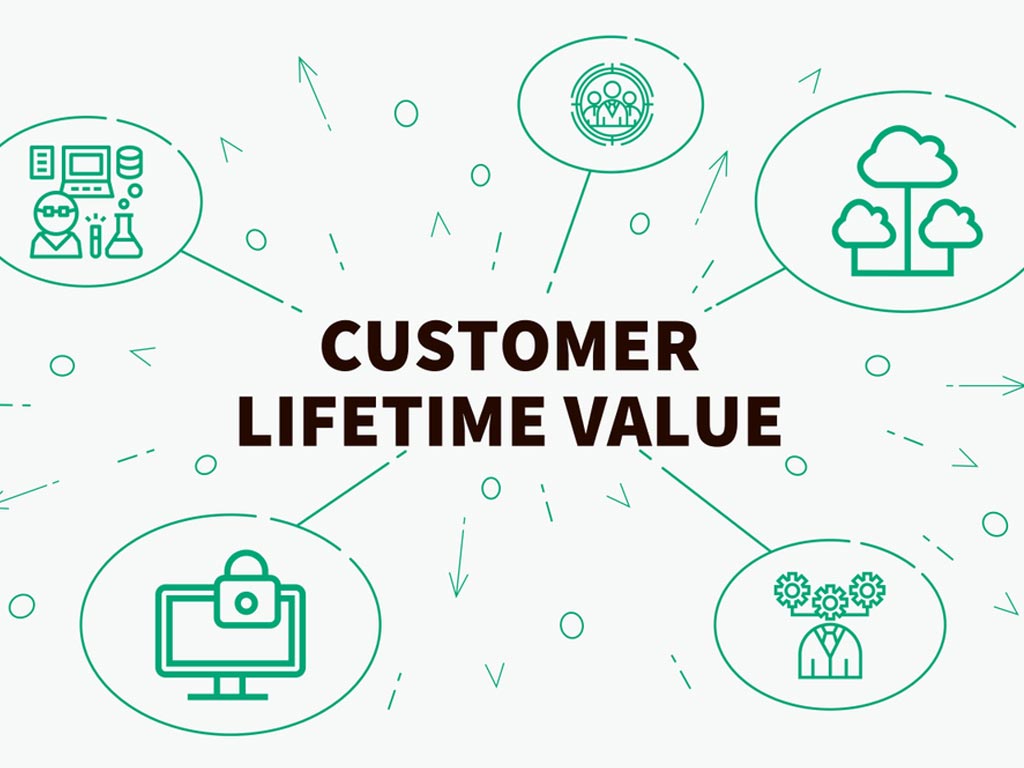Customer lifetime value, it’s a phrase that’s frequently heard in marketing circles, but one that is often miscalculated or misunderstood. What is customer lifetime value and how does it impact the way you do business? Understanding a customer’s lifetime value and knowing how to improve it can transform the way you interact with your customers and how you choose to focus your marketing efforts. Lean how to properly calculate this essential information.

Defining “Lifetime Value”
A customer’s lifetime value is their total value to your business over their lifetime. It includes the average amount that they’ll spend across all of their purchases with your company. The essence of a customer’s lifetime value includes their estimated future purchases as well as purchases that they’ve already made. As with any metric that attempts to predict future events, the right information with expert interpretation is vital.
How to Calculate Customer Lifetime Value
Hubspot has created an excellent infographic in “How to Calculate Customer Lifetime Value” the graphically illustrates how to do this calculation. To calculate a customer’s lifetime value, start by calculating your average purchase value: that is, how much do people typically purchase from your store? Then, determine how frequently customers make purchases. Do they come back regularly, or are they more likely to come in once or twice a year to make big purchases? Finally, calculate the average customer lifetime: how long do customers usually stay with your store? Do they usually make one or two purchases before moving to a competitor, or do they tend to stay with your company for years? Customer lifetime divided by frequency times average purchase value will give you the average lifetime value of each of your customers.
The Importance of Customer Lifetime Value
Understanding the lifetime value of each of your customers can provide a variety of mission-critical metrics about your business. An accurate customer lifetime value calculation can impact many aspects of market research planning.
Are you taking advantage of potential add-on purchases? For example, a running store that knows a runner is going to buy new shoes every couple of months may attempt to add on compression socks, or try to sell cold-weather running gear during the winter months, thus increasing the purchase value of that customer–and as the customer becomes accustomed to making those additional purchases, they may increase their lifetime value.
Are customers sticking with your company? Satisfied customers are more likely to come back to your business for their future purchases. Dissatisfied customers, on the other hand, are more likely to choose to take their business elsewhere. Are you providing adequate customer service? Offering products that your customers appreciate, with the quality they can trust? If you’re not bringing customers back, what can you change to help bring customers to you in the future?
Are there additional products or services you need to offer? Low customer lifetime value may indicate that your customer isn’t pleased with something–or it may mean that your competitors offer something that you don’t. Consider what you need to provide to bring customers back to your store and increase their lifetime value.
Increasing Customer Lifetime Value
If you find that customers don’t have a substantial lifetime value for your company, customer retention may be your challenge. Consider the following to improve customer lifetime value:
- Better customer service
- Improved products that your customers will consider trustworthy
- More add-ons
- An incentive to come back
- Improved marketing to former customers
- Information that will help bring your customers back to you
Improving customer lifetime value is a big step in ensuring that you can keep your business running smoothly. Repeat customers have far more value than customers who come once, then never return to your business. If you want to learn more about increasing customer lifetime value and improving your customer retention, contact New Perspectives today to learn more about how we can help you better meet your customer lifetime value goals.


